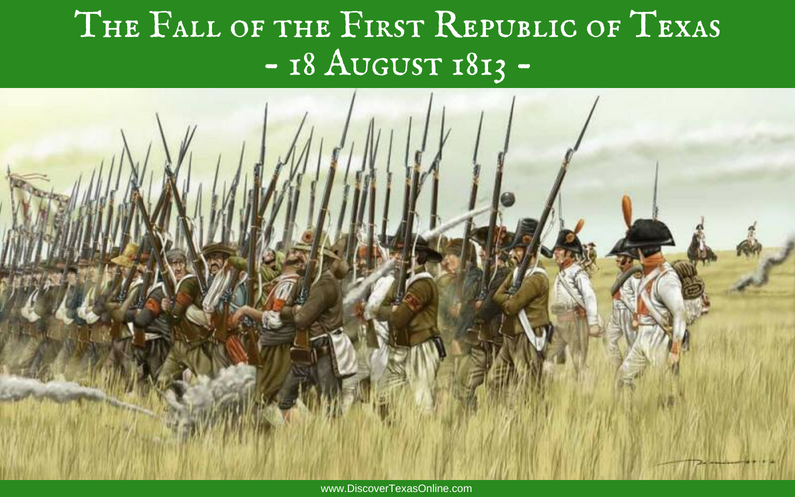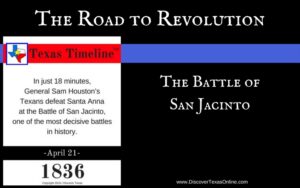 August 18 marks the anniversary of the Battle of Medina–bloodiest battle in Texas history–where over 1700 Texians lost their lives and their first short-lived attempt at freedom.
August 18 marks the anniversary of the Battle of Medina–bloodiest battle in Texas history–where over 1700 Texians lost their lives and their first short-lived attempt at freedom.
The story is found in Volume IV of the Discover Texas History program…
In December 1811, José Bernardo Gutiérrez de Lara traveled to Washington, D.C. to ask the United States to support Mexico in its fight for independence. Officially, he received no promises; but unofficially, he was led to believe that the United States would not stand in the way of a filibustering expedition. Through channels he was introduced to William Shaler, a consular officer seeking to enter New Spain as an observer for President James Monroe. Shaler became the adviser for the expedition and appointed Lt. Augustus W. Magee to lead the adventurers who began to gather in Natchitoches, Louisiana, hoping to take Texas for the United States.
A small army of about 130 men crossed the Sabine on August 8, 1812 and had little trouble breaking through Spanish frontier guards to enter Nacogdoches four days later. Many men there joined Magee’s forces, and he left again the next morning with an army of 300. Governor Salcedo expected him to attack San Antonio, so he moved his Spanish forces up to the Guadalupe River, but Magee veered east to La Bahía and took the presidio on November 7 with little opposition.
It took Governor Salcedo almost a week to get a small detachment of 200 men to the presidio. They laid siege to the fort on November 13 and waited for reinforcements. When the Spanish forces surrounding the fort grew to 800 men, Magee prepared to give up and asked for terms of surrender, but the Spanish offer was unacceptable. The filibusters decided to fight it out; however, before they could make their move, Magee died on February 6, 1813.
Samuel Kemper took command and acted quickly. The filibusters attacked the surrounding army twice within the next week, and the Spaniards retreated to San Antonio. Joined over the course of the next month by more volunteers from Nacogdoches and deserters from the Spanish army, Kemper led 800 men in pursuit. On March 29 they fought and defeated a Spanish army half again their size at the Battle of Rosillo. Governor Salcedo surrendered San Antonio unconditionally on April 1.
It was at the point of victory that the situation began to turn bad for the rebel forces. Gutiérrez began to assert himself as commander-in-chief of the expedition and ordered the execution of Governor Salcedo and fourteen Spanish officers.
Appalled, many Americans abandoned at once. They lost confidence in Gutiérrez and his provisional government. Samuel Kemper, himself, led more than 100 Americans back to Louisiana on “furlough.“ The Spanish forces reorganized and laid siege to San Antonio in an effort to recover Texas. There followed a series of struggles, changes in command, and petty arguments. Finally, the Americans were forced to retreat.
On August 18 the pursuing Spanish army defeated the republican rebels and filibusters at the Battle of Medina River. The survivors fled toward Louisiana. The royalists re-entered San Antonio and executed 327 suspected rebels. They took similar revenge in Nacogdoches. Though the Gutiérrez-Magee expedition failed to free Texas, it drew public attention and aroused rebel passion.


